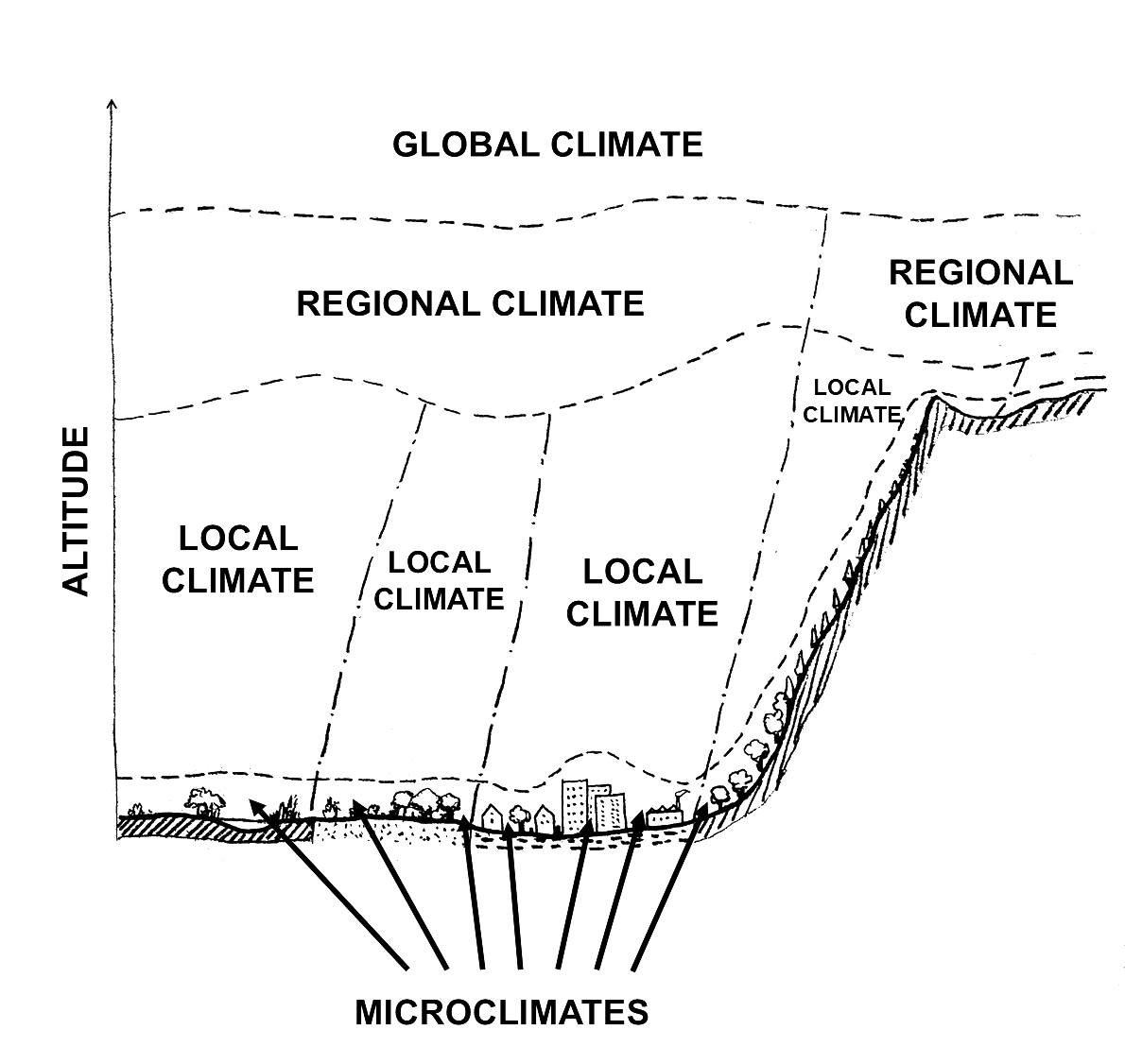
I sometimes read expressions like "Earth's microclimate" or "Paris's microclimate."
All these expressions reflect a confusion in understanding the order of magnitude of climatic and microclimatic phenomena.
Climatologists generally distinguish four climate scales, characterized by the greater or lesser influence of surfaces, substrate, and topographic and orographic factors.
First, there is the global climate, sometimes called the "macroclimate," which encompasses all major atmospheric circulations (ocean currents, jet streams, etc.) and is modeled by meteorologists.
At a lower scale, there is the regional climate, characterized by the influence of orographic and regional factors (ocean, mountains, etc.) and which also falls under the domain of meteorology.
At a finer scale, around ten kilometers, we find the local climate, which reflects the influence of surfaces and the boundary layer: the city of Paris produces a characteristic local climate.
Studying local climates requires numerical models with much finer mesh sizes, such as those used by Valéry Masson's team, for example.
Finally, at a scale of around ten to a hundred meters, we speak of microclimate, characterized by the nature of adjacent surfaces.
For example, there are different microclimates for each street in Paris, depending on its orientation, depth, impermeability, etc.
Microclimates are studied by microclimatologists and ecologists: to model them numerically, even more precise models, with a mesh size of a few meters, are required.
I hope these few explanations will be useful in better understanding climates and their nuances!
Sources: M. Sorre, R. Geiger, M. Yoshino, G. Escourrou.
Image: C. Gaillard, after M. Yoshino, 1961.